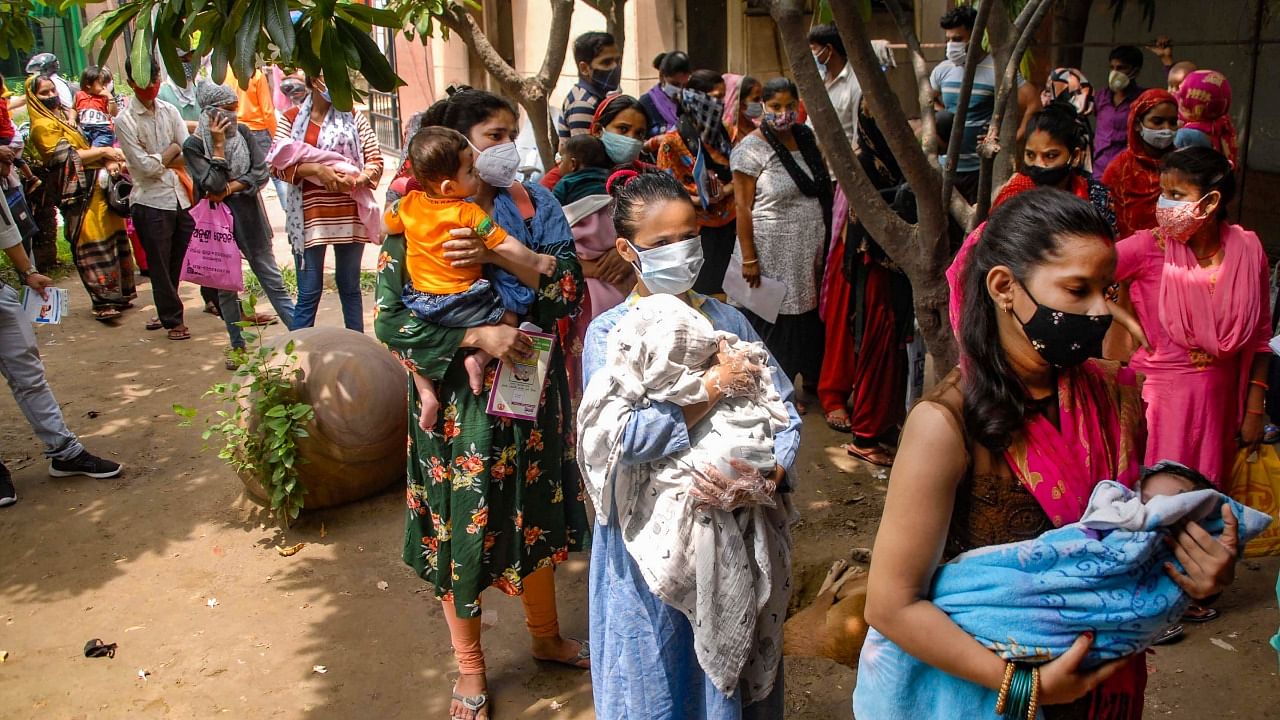
Yesterday, June 4, was the International Day of Innocent Child Victims of Aggression. While framing this Resolution, the UN probably visualised the brutal acts of aggression against children in times of war. It did not anticipate a different kind of brutality that would victimise them.
Covid-19 has invaded their lives socially, emotionally and pathologically. Apart from the health hazards, their studies have been interrupted, their social lives disrupted. For the millions of disadvantaged children in India who did not have access to schools, playgrounds, parks— or even properly ventilated homes— these last 15 months of forced confinement have threatened their physical and mental health in insidious ways.
Deprived of simple childhood activities, these children are potential victims of many diseases. It is time the central and state governments turned their attention to protecting them from the ravages of corona, especially in the wake of its new variants and after-effects like fungal infections.
It is also time to forget political differences and personal vanities. True, grave political blunders have aggravated the pandemic. But this is not the time for recrimination or regret. We have to move on to save our children. We are all in this together and must pull together. This is not the time for political bickering. In fact, it is no time for politics of any sort. Let the best brains in the country come forward to save future generations from the deadly after-effects of Covid-19.
India’s child population is one of the largest in the world. So, it will be an uphill task to protect this segment. As scientists and doctors have repeatedly stated, the one and only way of doing this is by vaccination. According to specialists working in paediatric infectious diseases, we may have taken a huge step towards ending the pandemic with vaccines like Pfizer’s now available for children between 12 and 18 years. Clinical trials for six-month-old babies are also underway in many countries. India must import more vaccines for the sake of its children.
But there are many hurdles to cross here. Public resistance to get vaccinated is the biggest hurdle. In a country where every charlatan orchestrates the actions of a gullible public, it is a herculean task to implement these safeguards. Superstitions and pseudo-religious beliefs are clear deterrents to immunisation. Yet, despite such constraints, we did overcome several epidemics and pandemics in the past. How did India eliminate smallpox, influenza and the plague? How did it put an end to life-threatening childhood diseases like diphtheria, measles and whooping cough? How did polio become history and tetanus just a bad dream? The magic of vaccination saved millions of lives.
Today, a new-born baby is protected against jaundice with hepatitis B vaccine soon after birth. She is protected against tuberculosis and pneumonia with a BCG and PCV vaccine immediately after. She then receives DPT shots to protect her from diphtheria, pertussis and tetanus during her first three months; she is administered an MMR vaccine as well to guard her against measles, mumps and rubella. This is followed by the routine varicella vaccine to keep away chicken pox. The polio virus vaccine is dropped into her mouth periodically thereafter to save her from crippling polio; she is protected against typhoid and cholera throughout her adolescent years with seasonal inoculation. Her life has been protected against crippling and fatal diseases with a mere jab.
If the public has already accepted these preventive measures and allowed new-born babies and young children to be compulsorily vaccinated against life-threatening or crippling diseases, what makes it different or difficult for governments to make the Covid-19 vaccine mandatory in the interest of children’s health? True, public resistance based on superstition is not easy to tackle.
Also read: PM Modi reviews Covid-19 vaccination drive; says wastage on higher side, must be brought down
It is a belief system like religion and almost impossible to change, especially when popular ayurvedic pundits publicly denounce both science and modern allopathic medicine. Stories of the difficulties faced by WHO or UNICEF during the polio or smallpox eradication drive reveal that public acceptance of such programmes have always met with stiff resistance. Entire communities have been bribed with gifts or cash to accept them.
In India, educating people to gain their acceptance of vaccinating against Covid- 19 may be a good long-term solution. But sadly, the coronavirus will not wait. It will diminish half the world’s population if left unchecked.
So, we may have to adopt more creative methods if all else fails. Schools can mandate vaccination as a prerequisite for admission and promotion. They can also mandate students to produce valid vaccination certificates to be able to appear for the school final examinations.
Cinema theatres and restaurants, clubs and sports facilities, malls and shopping centres could all deny admission to adolescents without proof of vaccination. Likewise, travel by train, air, bus or metro should be barred to youngsters who are not vaccinated. If we adopt stern measures like these, Covid-19 may be found only in history books.